The ARK Park Dinosaur VR Game Review
Publisher and developer Snail Games released the VR multiplayer adventure ARK Park last Thursday, March 22 during the Game Developers Conference in San Francisco. Ark Park is based on Studio Wildcard’s ARK: Survival Evolved, an amazing survival game that has incredible visuals especially for powerful PCs, and we had hoped for something similar in VR.
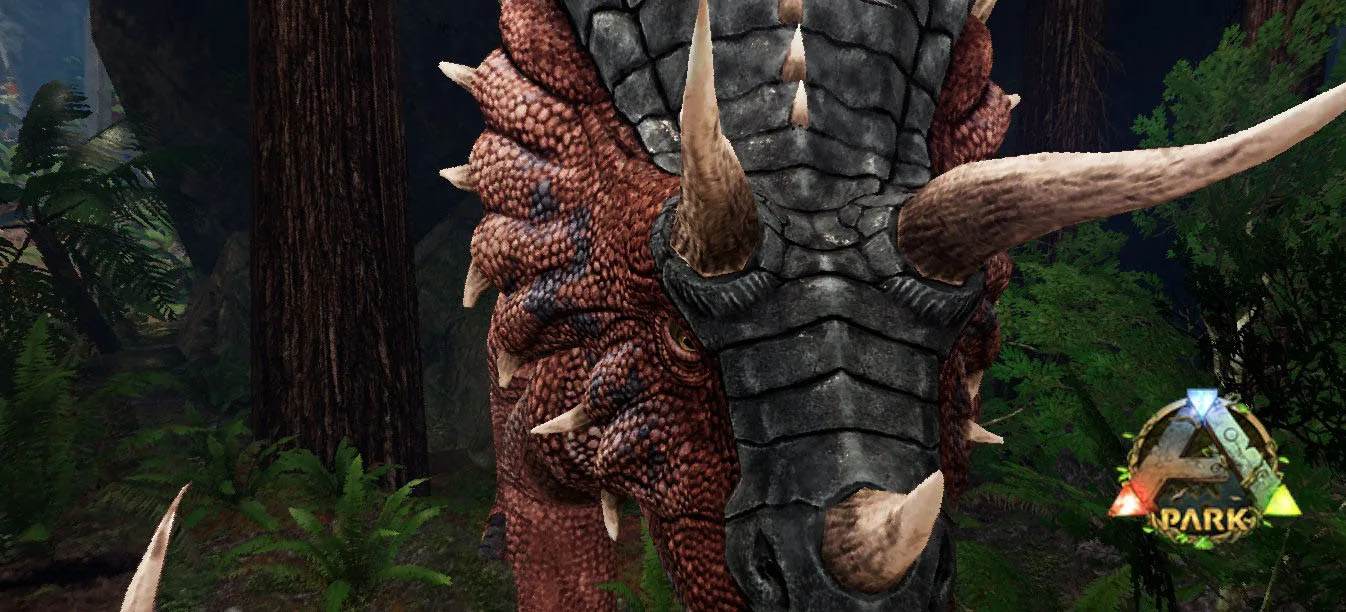
ARK Park is a multiplayer VR adventure game set in a dinosaur theme park and it promises free exploration with online friends without a plot line or schedule. It allows HTC Vive, PSVR, and Oculus Rift users to interact with some of the dinosaurs in ARK: Survival Evolved. The idea is to explore your own “Jurassic Park”, and it has a few elements that are somewhat similar to the movie in that there are opportunities to study genetics, raise baby dinosaurs from eggs, ride and paint them, and even defend the park against attacking dinosaurs in a wave shooter segment when things go wrong with security.
We are got a reviewer’s copy of ARK Park as a preview from the publisher’s agent, and this is the game review which includes FCAT-VR testing measuring the performance of eight of AMD’s and NVIDIA’s top cards on the Oculus Rift. As an Unreal Engine 4 VR game, ARK Park sports some very impressive visuals on High settings, and it is quite demanding with a GTX 970 being the minimum video card and a GTX 1080 being recommended. It features the NVIDIA logo and the game seems well-optimized for GeForce gamers.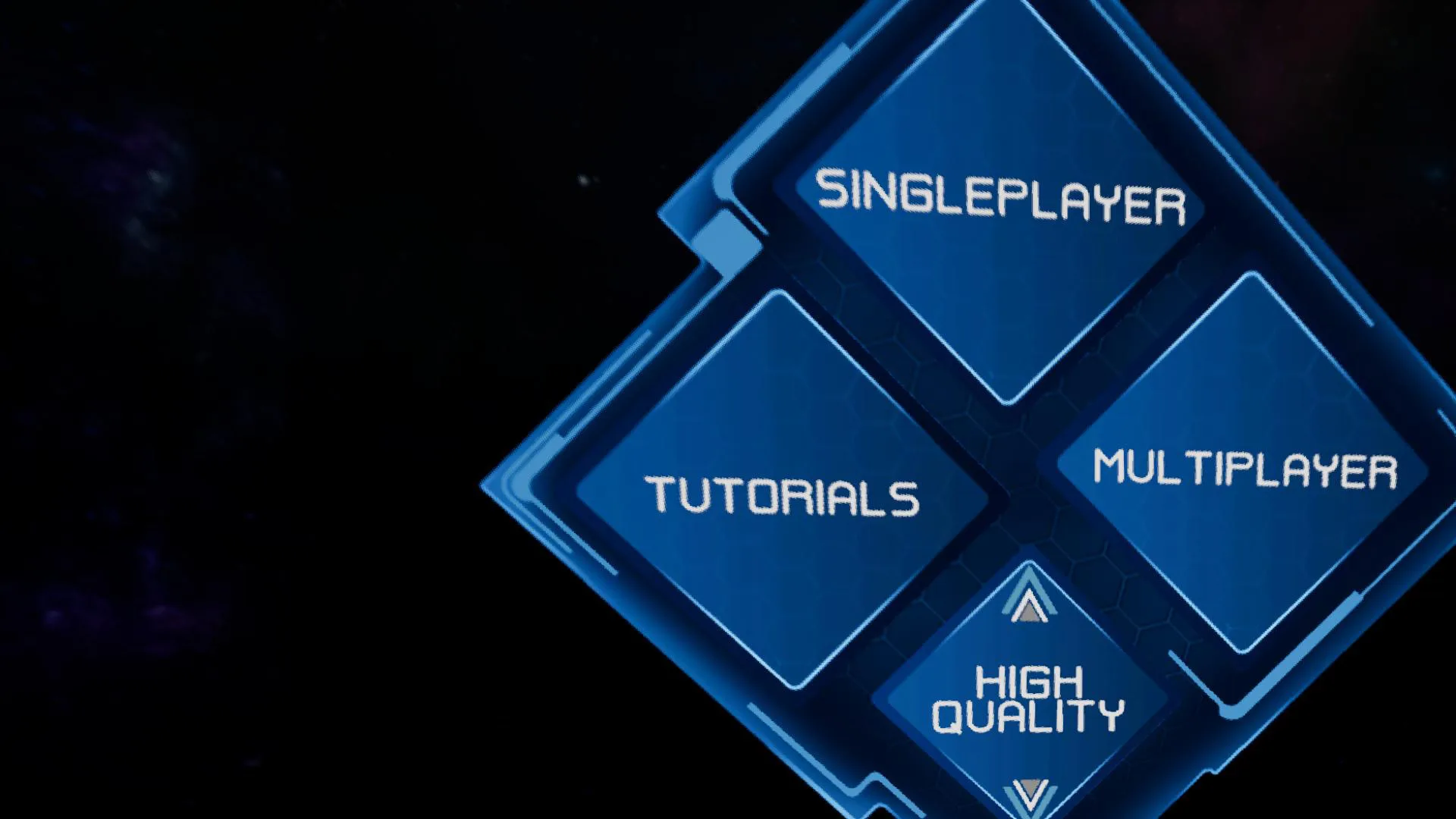
ARK Park is a must-buy for dinosaur nuts like this editor used to be since childhood. However, it is not scientifically accurate in all of its depictions, and creatures from all eras co-exist in the park. It uses teleportation as the only means of locomotion which may immediately turn off many prospective VR game buyers. However, teleportation is implemented decently in this game although we wish a design decision was made to also include free motion.
ARK Park does not stand or fall on its lack of locomotion choices. Instead, it fails to deliver on many other levels. The first map introduces the player to ARK Park and it offers a train ride which can be skipped by heading directly to the main menu. The ride is less demanding on a video card than other maps, and we see a couple of dolphins swimming at 140 kph alongside the train together with only one huge predator of the ancient seas. This opening scene portends the lack of reality and lack of content that afflicts ARK Park although there are some nice features.

Using the Unreal 4 Engine, ARK Park delivers some very nice visuals, perhaps even surpassing CryTek’s Robinson: The Journey which is another dinosaur-themed game. Unfortunately, the way the visuals are implemented in ARK Park, a GTX 1070 Ti is the minimum card for High settings at 90 FPS, and lesser cards only gain a little performance by dropping to Medium but with a major image quality loss. Fortunately, the game is mostly an exploration game and 45 FPS with reprojection is probably good enough for a GTX 1060 to play at.
We played the Oculus Rift version of ARK Park using a Core i7-8700K overclocked to 4.7 GHz, an EVGA FTW Z370 motherboard, and 16 GB of Kingston HyperX DDR4 at 3333 MHz on Windows 10 64-bit Home Edition. We used the very latest drivers from NVIDIA (391.24) and the latest drivers from AMD (18.3.3) at time of writing. Here are the eight video cards that we played and benchmarked ARK Park with:
- GTX 1080 Ti FE 11 GB
- GTX 1080 FE 8 GB
- GTX 1070 Ti FE 8 GB
- GTX 1070 FE 8 GB
- EVGA GTX 1060 SC 6 GB
- Gigabyte RX Vega 64 Liquid Cooled Edition 8 GB
- PowerColor Red Devil RX Vega 56 8 GB
- Gigabyte RX 480 G1 8 GB
One has to experience ARK Park as a VR player to appreciate it, and not from viewing videos. And there is absolutely no way to convey the sense of immersion that comes from playing it in VR on the High preset with the feeling of actually “being there”. The game is beautiful, and each scene is quite detailed with the feeling of it being “alive”.
ARK Park was completely stable for us and never crashed. It loads quickly from a SSD which helps to keep immersion although some of our interactions with the environment were not ideal but overall, good. The Touch controllers are referred to as “teleporters” in the tutorial, and the player is warned not to lose them. You can teleport in any direction up to the limit of its beam, and the other controller is used to face the player in the desired direction. The player can call up several in game menus at the touch of the corresponding buttons, and the in-game camera works well and it also stamps the ARK Park logo on the capture as above.
The player can call up several in game menus at the touch of the corresponding buttons, and the in-game camera works well and it also stamps the ARK Park logo on the capture as above.
There is a tutorial available that is strangely demanding on performance even though it covers the same areas of the game later. However, it is wise to take the tutorial as it saves time overall by explaining how to easily achieve the goals necessary to play the game.
The Museum 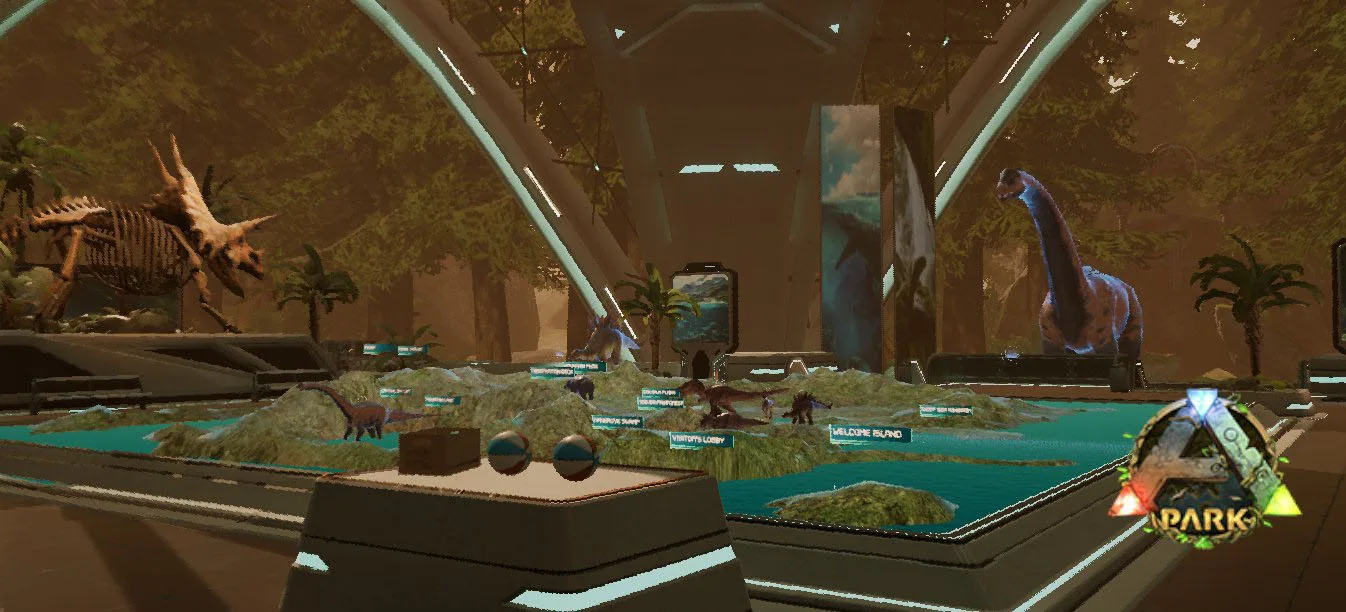
The museum is an interesting part of the game that is supposed to be an educational experience but it seems very much geared to the very youngest players. It may be fun to interact with the miniature dinosaurs, and to also watch small holograms of dinosaurs increase in size to tower well above the player, but there isn’t a great variety of dinosaurs, nor do the interactive exhibits offer much detail or history about the dinosaurs. It seems like an opportunity lost to educate as well as to entertain in this reviewer’s opinion.
The real attraction of Ark Park is the exploration of the Park’s distinct areas although upgrades to get there involving genetic crafting and harvesting are more of a grind the player has to put up with to proceed.
Upgrades, Genetic Crafting, and Exploration
Crafting and upgrades are a big part of ARK Park. The player begins with a single handgun which is created using materials that are gathered in the game’s six other playable areas. There is also some frustration present with getting upgrades of living genetic material that are quite hard to scan and capture, and crafting soon becomes a tedious repetitious grind that takes the fun out of the game as the player performs the exact same sequence each time they want to unlock or upgrade.
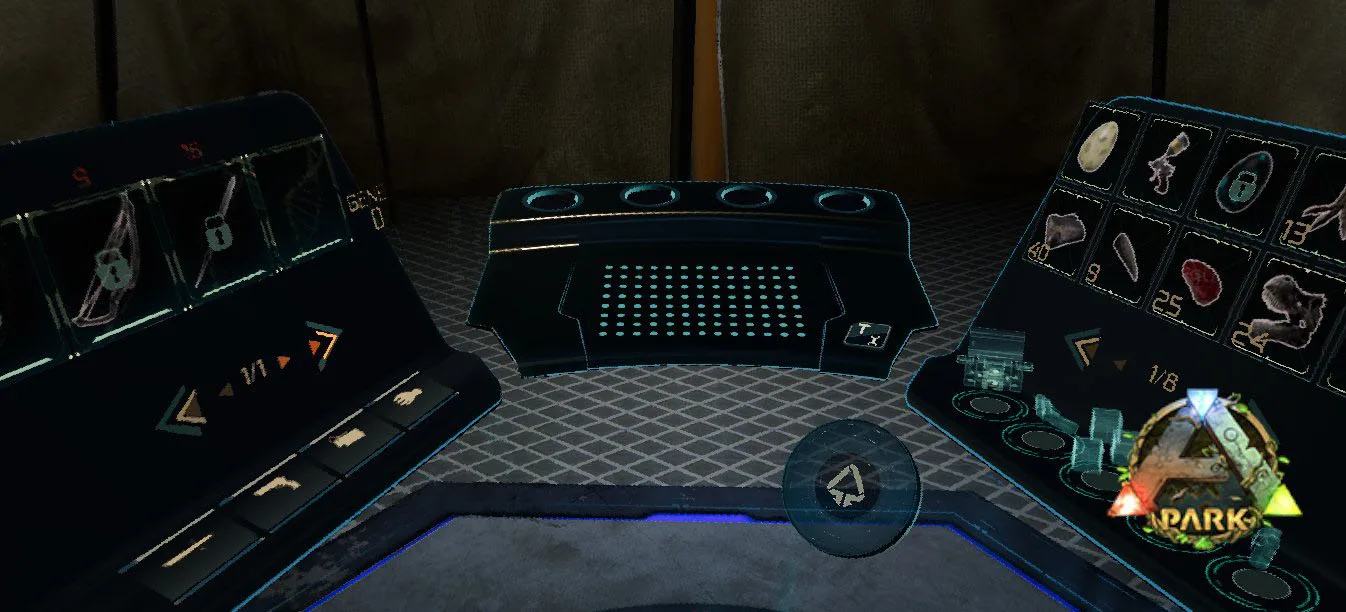
A focus on exploration may have made ARK Park memorable instead of adding time-consuming crafting grinding. The game is visually beautiful and much of the pleasure derived from it is just from appreciating the interaction with the incredibly detailed environment and exploring the all too-small areas of the game.
Wave Shooter
ARK Park introduces a player to the dinosaurs and even encourages genetic research and the raising of baby dinosaurs from eggs to adults that you may paint and ride – and then it lets you shoot and kill dinosaurs when the security equipment fails. Even if you can get over the irony, the shooter element just seems tacked on to an exploration game and it doesn’t add a lot of value to it.
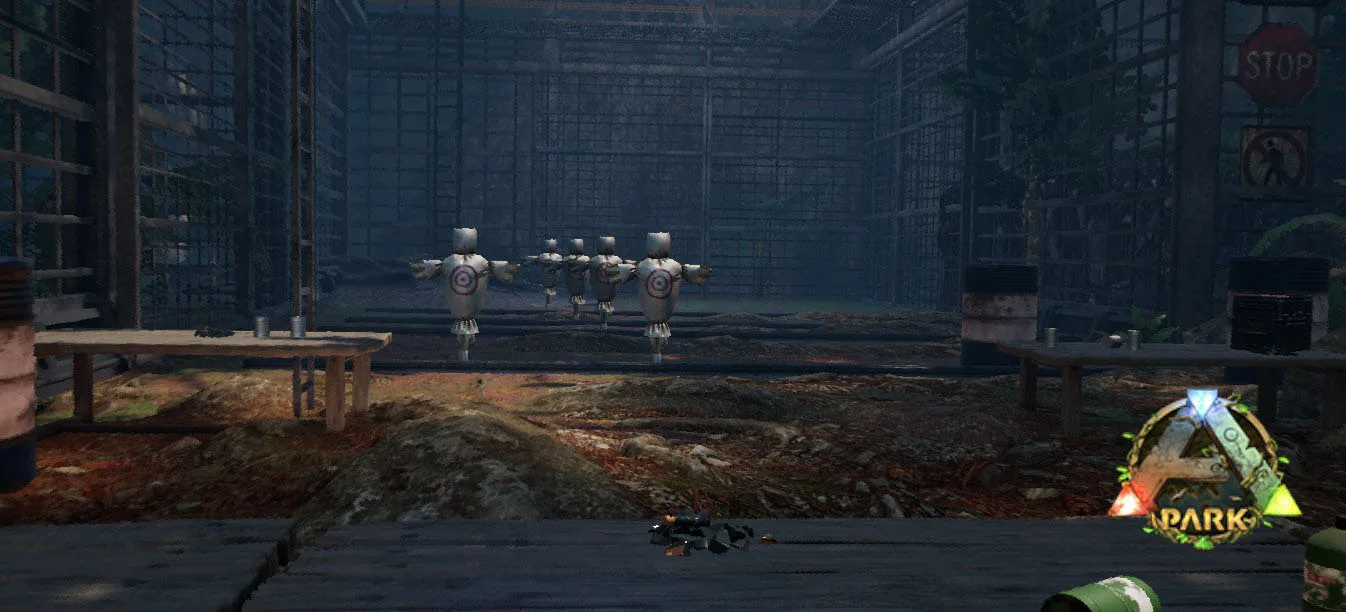
The player starts out by crafting a pistol and facing off against waves of dinosaurs attacking a damaged transmitter that keeps them docile. Success means shooting all of the various attacking dinosaurs that come in each progressively more difficult wave. However, two shots from a handgun is plenty – either in the head or in the body – to put even large beasts down, and it’s basically target practice. As the player progresses, finding material to repair and craft more and more powerful weapons and wield them two-handed, they will face larger and more powerful beasts on different maps.
Realism and Fun factor
ARK Park is not really believable to those who know the history of the dinosaurs, and it did not really draw this reviewer into the game from the beginning although the visuals are impressive and it is fun to interact with the dinosaurs. 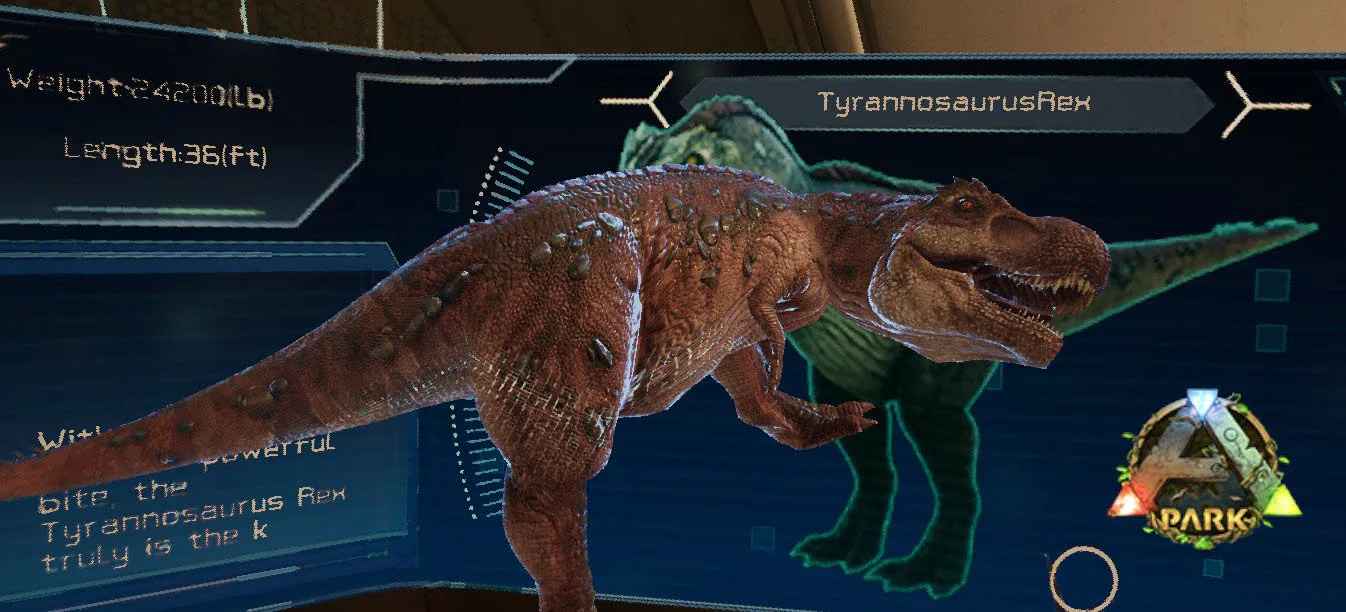 Because the maps are not large and there are areas that the player cannot access, one soon runs out of varied things to do. Raising a dinosaur from an egg yields the same exact same jungle ride as from the other dinosaurs although some customization is possible if you choose to spray paint your pet.
Because the maps are not large and there are areas that the player cannot access, one soon runs out of varied things to do. Raising a dinosaur from an egg yields the same exact same jungle ride as from the other dinosaurs although some customization is possible if you choose to spray paint your pet.
Audio
ARK Park’s audio is very good and it is positional which means that it’s easier to tell what is happening all around the player making the experience quite immersive. The audio from the Oculus Rift headset is particularly well-delivered adding to the immersion of the VR experience and the ambient animal sounds are very good if probably inaccurate.
ARK Park VR Performance and Image Quality (IQ)
We have favorably compared FCAT VR with our own video benchmarks which use a camera to capture images directly from a Rift HMD lens. For BTR’s regular VR testing methodology, please refer to this evaluation.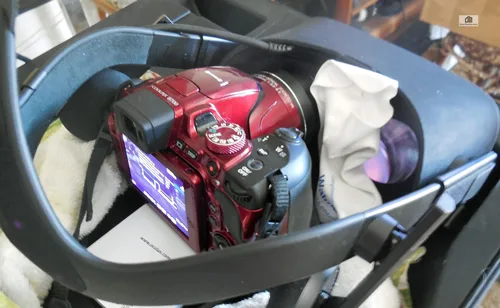
Until FCAT VR was released, there was no universally acknowledged way to accurately benchmark the Oculus Rift. To compound the difficulties of benchmarking the Rift, there are additional complexities because of the way it uses a type of frame reprojection to keep framerates steady at either 90 FPS or at 45 FPS. It is important to be aware of VR performance since poorly delivered frames will actually make a VR experience quite unpleasant and the user can even become VR sick.
There are three presets in ARK Park – High, Medium, and Low. High gives the very best VR experience and the game world appears to be “alive” and “real”. It is an amazing experience to have Pterodactyls glide by while fish swim naturally in a pond while being hunted by giant beavers with detailed fur. As you approach the beavers, they will even react to your presence.

However, turn the preset down to Medium, and the game loses its visual appeal although performance increases by only about 15-20%. The fish now appear to be swimming in air, textures blur, and the beavers’ fur becomes a shiny plastic on Medium. Dropping to Low further gives a slight performance boost, but ruins the VR experience for us as the textures and details become even more flat-looking and less detailed.
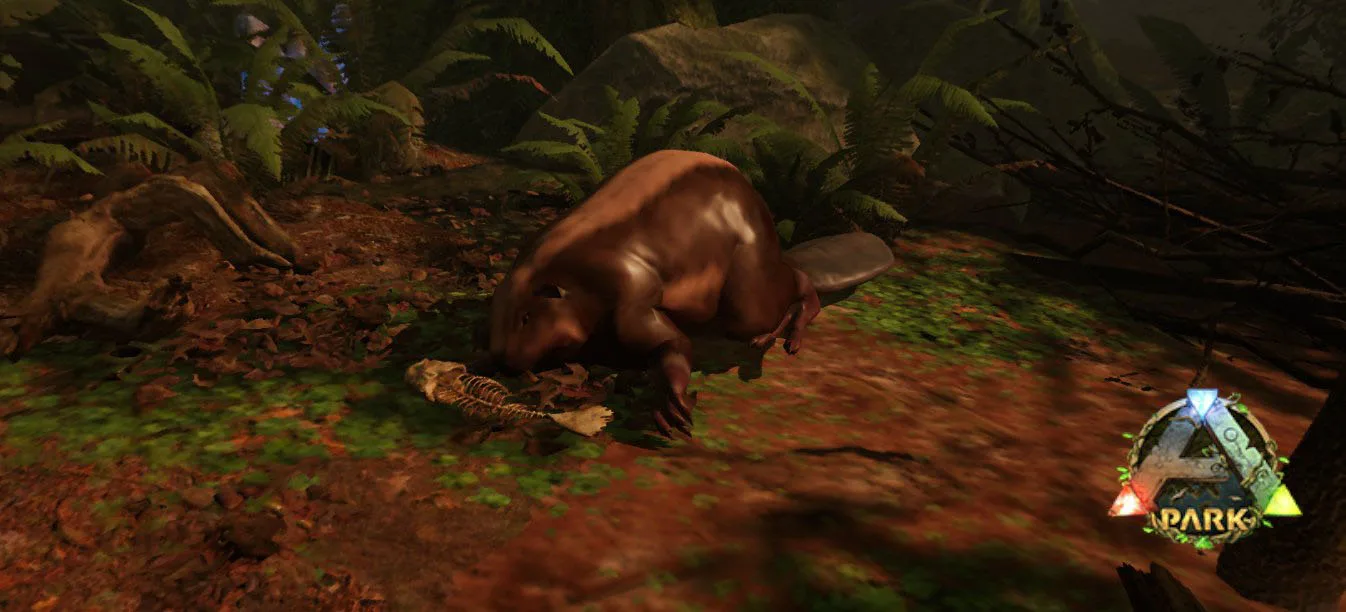
Our recommendation is to play on High and put up with reprojection rather than suffer the extreme visual loss with Medium. It appears that ARK Park works pretty well at a steady 45 FPS, but we would not accept lower.
Here are the frametimes of 6 video cards that we tested using the High preset. Best performance are represented by the lowest frametimes.
Here are the same frametimes with the interval plots added: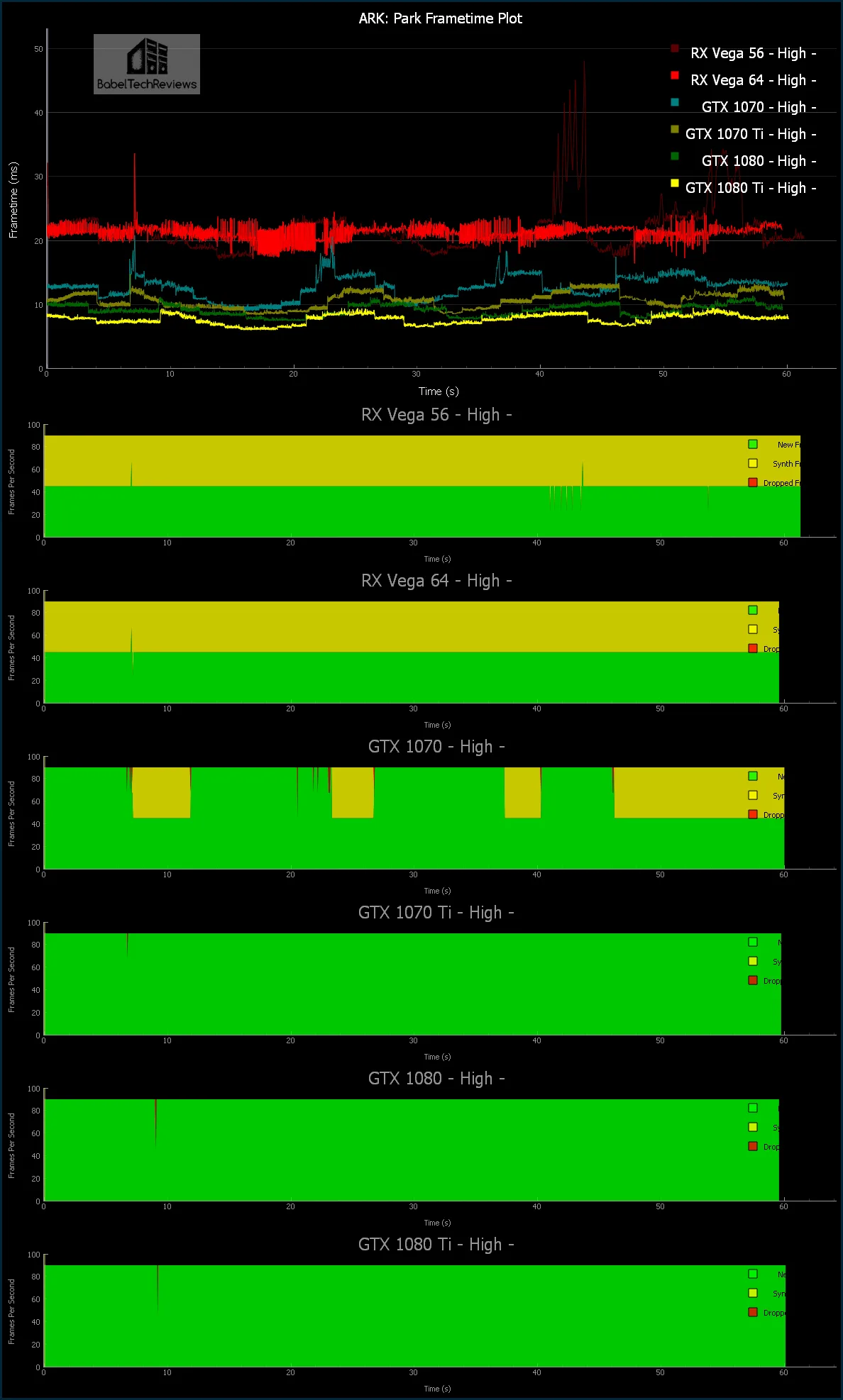
The GTX 1080 Ti, the GTX 1080, and the GTX 1070 Ti can all manage High settings without going into reprojection and the experience is very good. But the RX Vegas can barely manage High without dropping to a steady 45 FPS using reprojection. Clearly AMD will have to release a new driver.
Here are the three cards suitable for the Medium preset, including the interval plots:
The GTX 1070 can easily play on the Medium preset while the GTX 1060 goes into reprojection. However, the game is not playable with the RX 480 overclocked to RX 580 speeds.
Here are the two lower-end cards tested on the Low preset: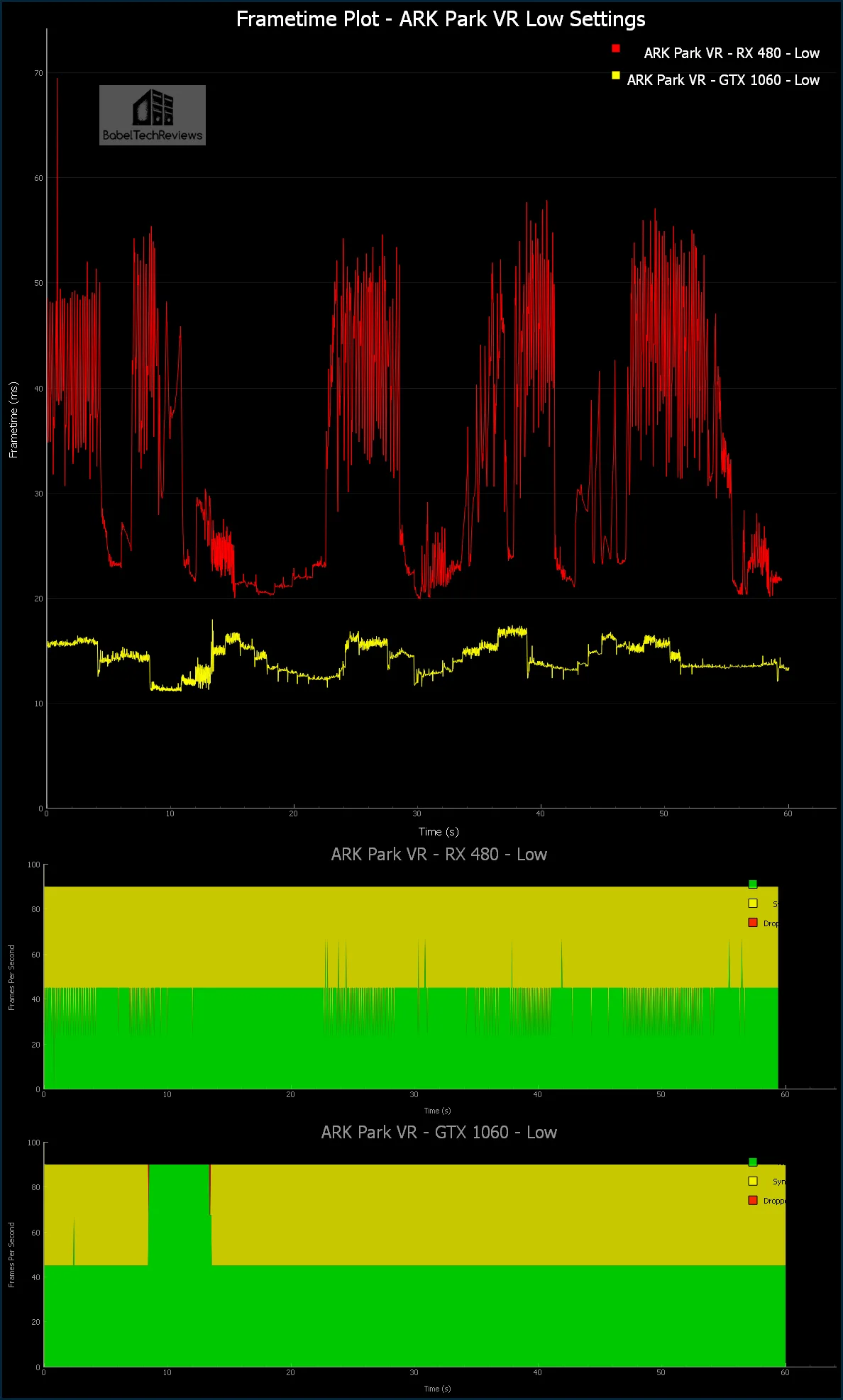
The GTX 1060 still goes into reprojection, but it is playable in contrast with the overclocked RX 480.
Unconstrained FPS, dropped, and synthetic frames
Now let’s look at the unconstrained FPS of each card which are the framerates that could have been delivered if the FPS were not locked to either 90 FPS or 45 FPS by ASW reprojection. The unconstrained FPS are in Bold, while the dropped (d) and synthetic (s) frames are shown in italics. 90 FPS or higher represents the best performance.
The GTX 1080 Ti and the GTX 1080 can both increase the resolution scale or the pixel density to add to the immersion by sharpening up the visuals and decreasing the screendoor effect because they both have headroom. This is quite helpful with reading text although it is generally clear enough. The GTX 1070 Ti can also handle the High preset with no compromise but there is no headroom for increasing the pixel density, while the GTX 1070 can also run with High settings although there are some dropped frames and about 20% of the frames will be reprojected.
Both the GTX 1060 and the RX Vega can actually deliver a satisfactory experience with reprojection, but it is really clear that the Radeons need new drivers for their Premium and entry-level VR cards. The RX 480 at 580 clocks gives a miserable VR experience even on the Low preset.
Conclusion
ARK Park is a fun dinosaur park exploration game with some replayability from the multiplayer aspect that we did not test. The immersion level that the High preset provides really adds to this game and it’s strong visuals are perhaps the strongest argument for VR in gaming. However, good VR performance requires a GTX 1070 Ti as the minimum card, as Medium looks quite poor compared with High, but only gains little performance in exchange for the IQ drop. And Radeon gamers will have to settle for reprojection of half of their frames using a RX Vega until AMD releases updated drivers that address their weak performance.
If we have to give it a score, ARK Park deserves an “6.0” in our opinion as a beautiful but only fair dinosaur exploration game with a tacked on and not particularly well done wave shooter. Teleportation is sufficient for locomotion but the game overall fails to deliver enough interesting content for $39.99 .
ARK Park comes recommended only for dinosaur fans who just love to interact with these giant beasts. Others may want to consider that Oculus and Steam both give time-limit guarantees with their games to players who want to try most games without risk, and there is a $15 credit on the Oculus store for many Rift gamers. It is a beautiful game that we hope will get further fleshed out by the developers.
ARK Park has become BTR’s latest VR benchmark. After we return from the GTC next week after previewing VR demos and the Vive Pro, we will review Team Group’s RGB NightHawk 16 GB DDR4 3200 MHz kit followed by a 20-game VR performance showdown between AMD’s and NVIDIA’s best video cards.
Happy Gaming!